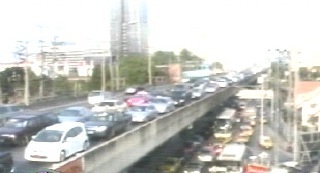BANGKOK, March 23 – Excessive levels of cancer-causing agents are being found in Thailand’s urban areas such as Bangkok and the metropolitan region, as well as in urban centres such as Chiang Mai, Khon Kaen, Songkhla and Rayong, according to the Pollution Control Department (PCD).
PCD Director-General Wijarn Simachaya said three types of volatile organic compounds (VOCs) have been found is rising concentrations in Thailand’s urban areas for several years. He described the emergence of the compounds as worrisome.

He identified three of the primary cancer-inducing compounds as benzene, 1,2-Dichloroethane and 1,3-Butadiene. The two chemicals are used in Thailand’s chemical industries to produce vinyl chloride and synthetic rubber. The atmospheric level of both agents exceeds the standard limit every year, he said. Air pollutants are measured in microgrammes (abbreviated as mg) per cubic metre (abbreviated as m3), normally written as mg/ m3.
In Bangkok’s Din Daeng housing complex, benzene at 6.3 mg/m3 is now being registered, nearly four times its average level of 1.7 mg/ m3 per year. Dichloroethane is found there at 0.15 mg/ m3, lower than Thailand’s annual average level at 0.4 mg/ m3.
On Lad Phrao Road at Chokchai 4 police station, Benzene at 4.3 mg/m3 and dichloroethane at 0.18 m/ m3 were recorded, while on Rama IV Road at Chulalongkorn Hospital, benzene at 6.1 mg/ m3 and dichloroethane at 0.14 mg/ m3 were measured.
Meanwhile, the level of pollution in Thailand’s other main provinces tend to be higher due to traffic problems.
Mr Wijarn said he expected the air will be less polluted once the Euro 4 fuel standard is used beginning in July, as it should cut benzene emissions from 3.5 per cent to 1 per cent.




